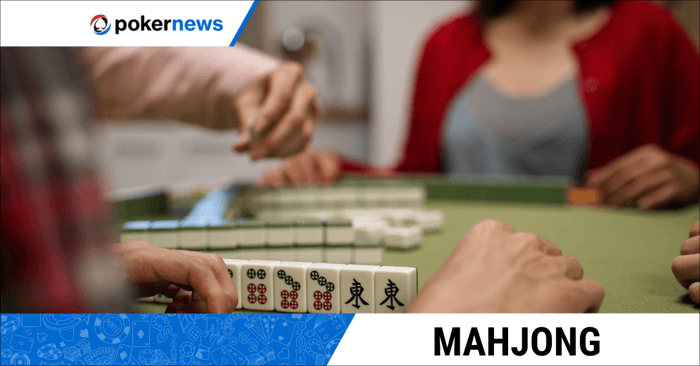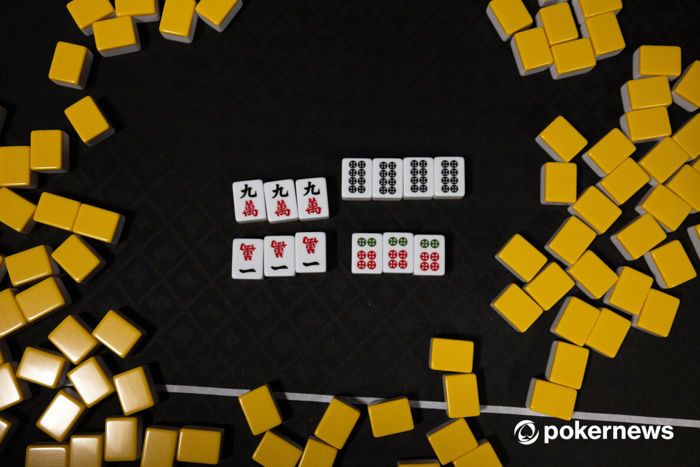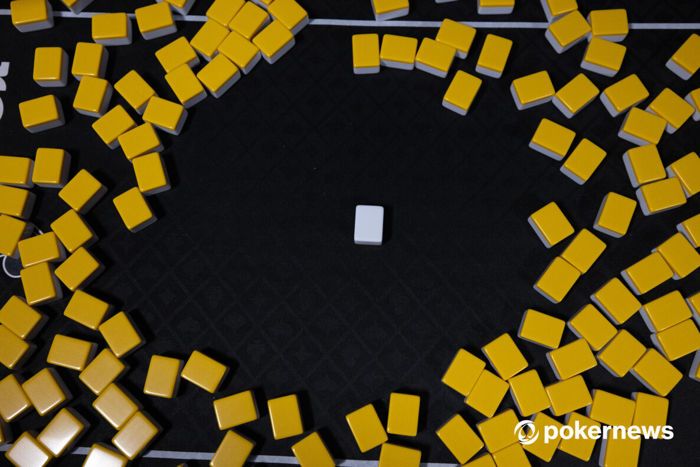Mahjong Solitaire - A Deep Dive into the Art of Solo Tile Matching

Embark on a solo tile-matching odyssey with Mahjong Solitaire, a captivating puzzle game that challenges your mind. In this article, we'll dive into the unique dynamics, rules, and strategies that make Mahjong Solitaire an engaging and contemplative experience distinct from its multiplayer counterpart, Mahjong.
The Basics of Mahjong Solitaire
Mahjong Solitaire is a captivating solo tile-matching challenge that differs significantly from traditional Mahjong. The game typically begins with a layout of face-up tiles arranged in a specific pattern. The fundamental objective is to clear the entire board by matching pairs of identical tiles, eliminating them from play. The layout commonly takes the form of a multi-layered structure, creating a visually intricate puzzle for players to navigate.
The rules of matching in Mahjong Solitaire are straightforward but require careful consideration. Players can only match tiles that are not obstructed by other tiles on their left or right sides and have at least one free side (either the left or right) unblocked. The challenge lies in strategically selecting pairs of tiles to create matches while strategically uncovering and exposing additional tiles for future pairings.
Unlike traditional Mahjong, Mahjong Solitaire is a solo endeavor without opponents, allowing players to focus on their own strategic decisions and pattern recognition. Success in Mahjong Solitaire is achieved by efficiently clearing the board within a specified time or move limit, challenging players to think critically and plan their moves ahead.
The basics of Mahjong Solitaire encompass a balance of pattern recognition, strategic thinking, and efficient tile-matching, making it a engaging and contemplative tile-matching game for players seeking a solitary yet challenging experience.
LEARN THE DIFFERENCE BETWEEN MAHJONG AND MAHJONG SOLITAIRE
The Objective of Mahjong Solitaire
The primary objective of Mahjong Solitaire revolves around the singular goal of clearing the intricately laid-out board. Unlike traditional Mahjong, where the aim is to form specific sets and achieve a winning hand against opponents, Mahjong Solitaire is a solitary puzzle challenge and is less complex, but still just as entertaining. The purpose is to systematically eliminate all tiles from the board, unraveling the puzzle one pair at a time.
Players achieve victory in Mahjong Solitaire by strategically creating pairs of identical tiles and removing them from the layout. The challenge lies not only in matching the readily accessible tiles but also in unveiling and strategically positioning tiles to expose more matching pairs. Success hinges on a balance of pattern recognition, foresight, and efficient decision-making.

As players progress through the game, the complexity of the layout increases, requiring more intricate strategies to clear the board within the allotted time or move limit. The objective is not only to remove tiles but to do so in a way that maximizes the potential for future matches, ensuring a smooth progression through the layers of the puzzle.
In Mahjong Solitaire, the satisfaction of achieving the objective comes from unraveling the visual complexity of the board through careful pair-matching and strategic removal. It's a solo journey where success is measured by the player's ability to unravel the challenge and achieve victory, one pair at a time.
The Layout of the Game
The layout of Mahjong Solitaire plays a pivotal role in shaping the challenge and enjoyment of the game. At the start, a complex arrangement of face-up tiles forms a visually engaging pattern, typically resembling a multi-layered structure. The tiles may be stacked or arranged in specific formations, contributing to the overall puzzle that players must unravel.
Different tile patterns within the layout introduce variations in difficulty. Some tiles may be easily accessible, while others are strategically concealed behind layers of tiles, requiring careful consideration to unveil. The layout often includes a mix of tile types, such as flowers, seasons, and character tiles, each with distinct visual cues that players must leverage for effective matching.
The significance of the layout lies in its ability to challenge players' pattern recognition and strategic thinking. As players progress through the game, they must analyze the arrangement of tiles, strategically removing pairs to expose hidden tiles and create pathways for future matches. The evolving complexity of the layout adds layers of difficulty, ensuring an engaging experience for players seeking a mental challenge.
Overall, the layout of Mahjong Solitaire serves as the canvas for the solitary puzzle, contributing to the game's aesthetic appeal and providing a dynamic platform for players to showcase their tile-matching skills and strategic acumen.
Strategies for Success in Mahjong Solitaire
Success in Mahjong Solitaire hinges on a combination of strategic thinking, pattern recognition, and efficient decision-making. One key strategy is prioritizing moves based on accessibility and potential future matches. Identifying pairs that are readily available for matching can create immediate openings on the board, allowing players to strategically expose and uncover additional tiles.
Planning ahead is a crucial aspect of Mahjong Solitaire strategy. Anticipating the consequences of each move and considering the implications for future pairs is essential. Successful players carefully analyze the layout, envisioning the evolving patterns as tiles are removed, and strategically choosing pairs that contribute to a clear and open board.
Efficient tile management is another critical strategy. Players should focus on clearing obstructive tiles to create pathways for accessing deeper layers of the layout. This involves uncovering tiles strategically, avoiding unnecessary blockages, and ensuring a smooth progression through the puzzle.
Utilizing the undo and reshuffle features judiciously is part of an effective strategy. While these tools can be helpful, excessive use may limit scoring potential, so players must strike a balance between using these features wisely and maximizing their opportunities for successful matches.

Successful players in Mahjong Solitaire approach the game with a mix of patience and calculated risk. While the game allows for a certain degree of randomness, strategic players can influence outcomes through thoughtful decision-making. By adopting these strategies, players can enhance their chances of unraveling the challenging puzzles and achieving victory in Mahjong Solitaire.
The Art of Scoring in Mahjong Solitaire
In Mahjong Solitaire, the scoring system adds an extra layer of depth to the gameplay, providing a measure of a player's performance and efficiency in clearing the board. Points are typically awarded for each pair of matched tiles, with additional bonuses for consecutive matches and strategic plays. The efficiency of moves directly influences the scoring, encouraging players to think strategically and plan ahead.
Achieving high scores in Mahjong Solitaire involves a combination of factors. The speed at which a player successfully clears the board can contribute to a time-based scoring component, rewarding those who efficiently unravel the puzzle within a shorter duration. Additionally, consecutive successful matches often trigger combo bonuses, enhancing the overall score and adding an element of skillful play.
Strategic decisions, such as prioritizing matches that open up the layout for future pairs, can significantly impact the final score. The scoring system encourages players to balance efficiency with careful planning, rewarding those who not only match tiles successfully but do so in a manner that maximizes the potential for additional matches.
While each Mahjong Solitaire implementation may have slight variations in scoring rules, the overarching principle remains the same: achieving high scores requires a blend of speed, strategic thinking, and effective tile management. The scoring system in Mahjong Solitaire transforms the game from a simple tile-matching challenge into a contemplative pursuit where players strive to optimize their moves and unlock the full scoring potential of this engaging solo experience.
The Endless Appeal of Mahjong Solitaire
The enduring appeal of Mahjong Solitaire lies in its timeless qualities that resonate with players of all ages. One key factor contributing to its popularity is accessibility. Unlike traditional Mahjong, Mahjong Solitaire is a solo game that can be enjoyed anytime, anywhere, requiring only a computer or mobile device. Its simplicity in terms of setup and the absence of opponents make it an approachable and relaxing choice for players seeking a solo gaming experience.
The meditative quality of gameplay is another aspect that draws players to Mahjong Solitaire. The solitary nature of the game allows for focused concentration, creating a calming and contemplative atmosphere. The rhythmic process of matching tiles and clearing the board becomes a form of mental relaxation, making Mahjong Solitaire a preferred choice for those seeking a mindful gaming experience.
The visually engaging tile layouts and the ever-present challenge of unraveling intricate puzzles contribute to the game's replayability. The randomized nature of tile arrangements ensures that each session offers a unique and engaging experience, keeping players coming back for more. The simplicity of the rules, coupled with the depth of strategic possibilities, adds layers of complexity that appeal to both casual and seasoned players.
Across generations, Mahjong Solitaire has maintained its appeal, transcending cultural and age boundaries. Its enduring popularity attests to its ability to provide a satisfying and engaging solo gaming experience that continues to captivate players and stand the test of time. How could you not have fun playing Mahjong Solitaire?
FAQs - Mahjong Solitaire
Can Mahjong Solitaire be played with physical tiles, or is it exclusively an online game?
Mahjong Solitaire is primarily played online through digital platforms, but some physical sets are available. However, the traditional Mahjong game involves multiple players and is played with physical tiles.
Are there different variations of Mahjong Solitaire, and do the rules vary?
Various implementations of Mahjong Solitaire exist, and while the core gameplay remains similar, rules and layouts can vary among different versions.
What are some common strategies for efficiently clearing the board in Mahjong Solitaire?
Common strategies include prioritizing accessible tiles, planning moves ahead, and strategically using undo and reshuffle features.
Can players customize the appearance or themes of Mahjong Solitaire games?
Many Mahjong Solitaire platforms offer customization options, allowing players to choose themes, tile sets, and backgrounds to enhance their gaming experience.
Are there time limits in Mahjong Solitaire, or can players take as much time as they need to make moves?
Time limits can vary based on the specific Mahjong Solitaire implementation. Some versions may have time constraints, while others allow players to take as much time as needed.
